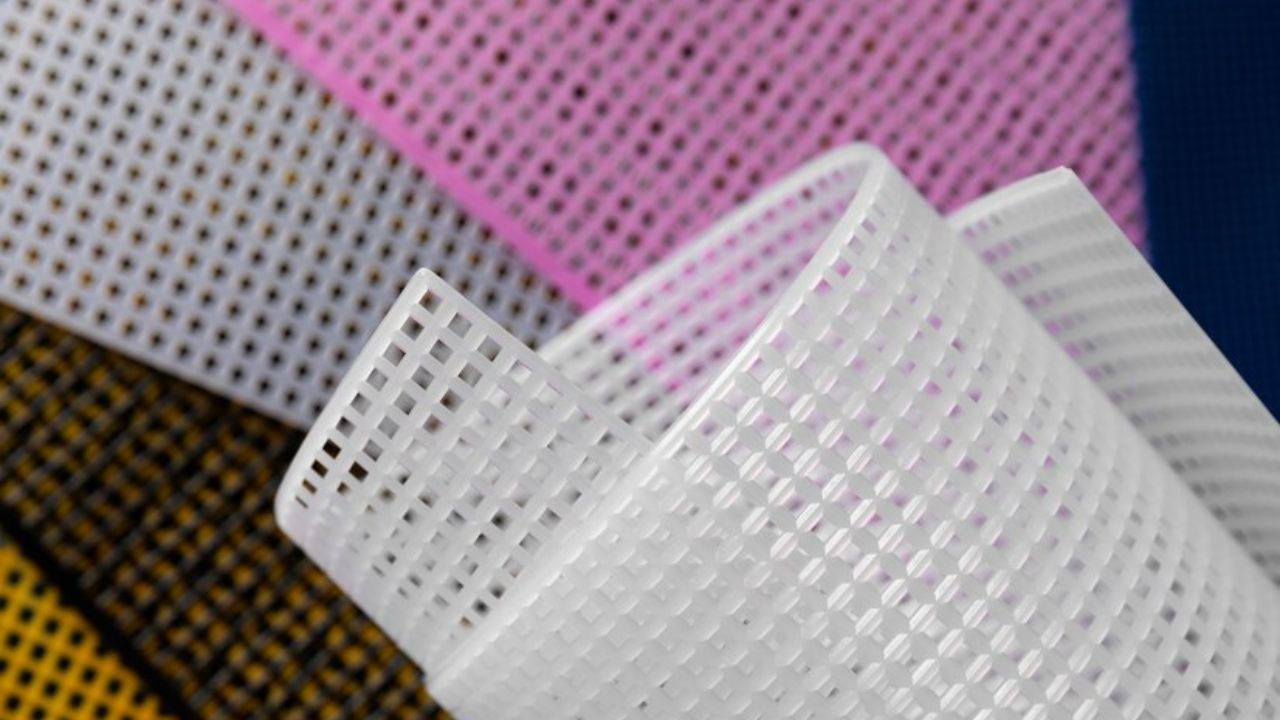BLOG
Fiber Glass 121 Textron: A Versatile Material

Fiberglass cloth is vital in various industrial and manufacturing applications due to its high durability, heat resistance, and versatility. Among these, the Fiber Glass 121 Textron stands out for its unique properties and applications, making it a preferred choice in the automotive, marine, aerospace, and construction industries. In this guide, we’ll explore the features, applications, and advantages of 121 Fiberglass Cloth, delving into why Textron’s product is a top choice for professionals.
What is Fiber Glass 121 Textron?
The Fiber Glass 121 Textron by Textron is a woven fiberglass fabric renowned for its lightweight structure, excellent durability, and versatility. Made primarily from silica-based fibers, it is tightly woven to ensure enhanced strength and rigidity. The designation “121” refers to the specific style and weight of the cloth, which is characterized by its balanced construction. This makes it suitable for a range of applications, from surface laminations to reinforcements.
Key Features of 121 Fiberglass Cloth
High Strength-to-Weight Ratio
One of the most significant advantages of 121 Fiberglass Cloth is its exceptional strength-to-weight ratio. It provides reliable strength without adding bulk, making it ideal for applications that require a balance between sturdiness and weight.
Resistance to High Temperatures
Fiberglass inherently withstands high temperatures, and the 121 style cloth is designed to resist temperatures up to 1000°F. This feature makes it suitable for use in environments with extreme heat.
Chemical Resistance
Textron’s 121 Fiberglass Cloth is resistant to most chemicals, including acids, alkalis, and organic solvents. This chemical resistance makes it ideal for use in industrial and automotive settings where exposure to corrosive substances is frequent.
Minimal Shrinkage and Dimensional Stability
The cloth maintains its size and form even when exposed to fluctuating temperatures. This stability is crucial for industries where precision and consistency are vital for product performance.
Ease of Use and Customization
The 121 Fiberglass Cloth is compatible with various resin systems, such as epoxy, polyester, and vinyl ester, allowing users to adapt it to specific requirements. It’s also easy to cut, shape, and apply, making it a practical option for custom applications.
Applications of 121 Fiberglass Cloth
Due to its durability, heat resistance, and lightweight nature, the 121 Fiberglass Cloth is used across numerous sectors. Here’s an in-depth look at its primary applications:
Automotive and Transportation
121 Fiberglass Cloth is commonly used in the automotive industry to reinforce body panels, interior components, and structural parts. Its lightweight property helps reduce the vehicle’s overall weight without compromising strength, which can improve fuel efficiency. The cloth’s heat resistance is beneficial in areas near the engine or exhaust system.
Marine Industry
Fiberglass is widely used in boat manufacturing for hulls, decks, and other structural parts. The 121 Fiberglass Cloth can withstand moisture and saltwater exposure, making it ideal for marine environments. Its chemical resistance ensures durability, even in harsh conditions, and it’s easy to mold and repair.
Aerospace and Aviation
Aerospace applications require materials that offer high strength and low weight. 121 Fiberglass Cloth meets these criteria, making it suitable for aircraft interior panels, fairings, and wing structures. The material’s thermal stability also makes it ideal for aviation applications where parts may be exposed to high altitudes and varying temperatures.
Construction and Infrastructure
The 121 Fiberglass Cloth is used for reinforcement in concrete structures, roofing systems, and insulation applications. It enhances the durability of structures and provides an additional layer of protection against the elements, extending the lifespan of construction materials.
Electrical and Electronics
The cloth’s insulating properties and heat resistance make it suitable for electrical insulation, circuit boards, and other electronic components. Its ability to withstand high temperatures ensures it performs effectively even in high-voltage environments.
Sports and Recreation Equipment
121 Fiberglass Cloth is often used to manufacture sports equipment like surfboards, skateboards, and snowboards. Its lightweight yet durable properties make it ideal for flexible and resilient products.
Benefits of Using 121 Fiberglass Cloth by Textron
Enhanced Durability
The tightly woven structure and silica-based composition ensure the 121 Fiberglass Cloth can endure significant wear and tear. This durability makes it cost-effective as it reduces the need for frequent repairs or replacements.
Versatility in Application
The material’s compatibility with various resin systems and ease of customization make it highly versatile. It can be adapted to different shapes, sizes, and purposes, enhancing its usability across sectors.
Improved Performance and Safety
In industries like aerospace and automotive, where safety and performance are paramount, the 121 Fiberglass Cloth contributes to producing safer, more reliable products. Its high thermal resistance and chemical resistance prevent potential hazards.
Eco-Friendly and Sustainable
Fiberglass is a more sustainable choice compared to certain other synthetic materials. It has a long life cycle, which reduces waste, and its lightweight nature helps in reducing emissions in transportation applications by enabling lighter vehicles.
How to Work with 121 Fiberglass Cloth
When using 121 Fiberglass Cloth, it’shandling it carefully to ensure optimal performance is essential. Here are some tips for working with this material:
Surface Preparation
Before applying the cloth, ensure the surface is clean and free from dust, grease, or other contaminants. This preparation will help in achieving a solid bond with the resin.
Cutting and Shaping
Sharp tools cut the fiberglass cloth to the required shape and size. Avoid fraying by carefully handling the edges and using a special cutting blade designed for fiberglass.
Applying Resin
Use the appropriate resin for your specific application. Epoxy resin is often recommended for high-strength applications, while polyester or vinyl ester resins work well for less demanding purposes. Apply the resin evenly to avoid air bubbles, as they can weaken the final product.
Curing and Finishing
Allow sufficient time for the resin to cure, and follow the manufacturer’s instructions for optimal results. Once cured, you can sand and finish the surface as required for a polished appearance or to prepare it for painting.
Why Choose Textron’s 121 Fiberglass Cloth?
Textron is a well-known manufacturer in the industry and is recognized for its commitment to quality and innovation. Here are some reasons why Textron’s 121 Fiberglass Cloth stands out:
High-Quality Standards
Textron adheres to stringent manufacturing standards, ensuring that each roll of 121 Fiberglass Cloth meets industry requirements for strength, durability, and performance.
Product Support and Expertise
Textron provides excellent customer support and resources, guiding clients through product selection, usage, and maintenance.
Reliability and Trust
With years of experience in manufacturing fiberglass products, Textron has established itself as a trustworthy brand in the industry.
Conclusion
The 121 Fiberglass Cloth by Textron is a versatile and highly durable material with applications across multiple industries. Its resistance to high temperatures, chemicals, and environmental factors makes it an ideal choice for manufacturers and builders. From automotive and aerospace to marine and construction, this fiberglass cloth meets the demands of challenging environments and enhances the longevity and performance of products.
BLOG
The Art of Keeping Your Pool Crystal Clear and Safe

Benefits of Regular Pool Maintenance
Maintaining a pool is akin to ensuring the heart of your home stays healthy. Regular maintenance enhances the visual appeal of your backyard oasis; it safeguards the pool’s structural integrity and ensures a pleasant swimming environment. Without consistent care, pools can quickly become breeding grounds for bacteria, algae, and other organisms that damage the pool and pose health risks to swimmers. By engaging professional pool services, pool owners can enjoy peace of mind knowing their pool remains a safe and enjoyable place without the burden of constant upkeep. Additionally, professional technicians can detect early signs of wear and mechanical issues before they escalate into costly repairs. Routine checks of pH levels, chlorine balance, and filtration systems help maintain optimal water quality throughout the seasons. Ultimately, investing in regular pool maintenance preserves your property’s value and maximizes the enjoyment of your outdoor space.
Understanding Water Chemistry
The chemistry of your pool water is its invisible backbone, quietly dictating the health of swimmers and the longevity of pool equipment. Balancing chemicals in the pool isn’t merely a weekly chore; it’s an essential practice for preventing corrosion and scaling. Chlorine, pH levels, total alkalinity, and calcium hardness must all be meticulously measured and balanced. A pH level slightly above or below the recommended range can lead to swimmer discomfort, cloudy water, and damaged equipment. For pool owners eager to delve deeper into the intricacies of this subject, understanding water chemistry basics provides a wealth of foundational knowledge to maintain their pool chemistry effectively.
Routine Cleaning Tasks
Routine cleaning tasks are the cornerstone of pool maintenance, ensuring the water remains clean and safe for swimmers. Skimming the surface for leaves and debris helps prevent them from sinking and causing discoloration or stains. Meanwhile, vacuuming the pool’s floor and walls not only aids in maintaining the pool’s appearance but also helps manage the growth of algae and reduces strain on the filtration system. Ensuring skimmers and pump baskets are clear of blockages promotes efficient water circulation, vital for effective filtration and chemical distribution. Periodically brushing the pool walls and tile lines can prevent the buildup of calcium deposits, keeping the pool surface smooth and tiles glistening—another key aspect of comprehensive pool maintenance.
Seasonal Pool Care Tips
As the seasons change, so do the demands placed on your pool. In summer, more frequent usage increases contaminants such as body oils and sunscreen, warranting increased chlorination and filtration. Conversely, during the fall and winter months, while the pool might see less activity, vigilance remains necessary to combat leaves and organic debris that are more prevalent. Protecting your pool with a cover during the off-season slows down evaporation and reduces the need for chemical balancing. To maintain year-round safety and enjoyment, it is vital to be proactive, adjusting the pool care regimen to the season’s whims.
Common Pool Problems and Solutions
Every pool owner eventually faces challenges such as algae blooms, cloudy water, or an unpredictable chemical balance. Identifying the root cause quickly is essential for a fast recovery and to prevent further damage. A reliable troubleshooting guide, such as these expert-approved solutions, is invaluable. Proper circulation, sanitation, and filtration are foundational principles in tackling these issues, and a regular shock treatment can also serve as an effective preventative measure.
Energy-Efficient Pool Management
As environmental concerns heighten, many pool owners opt for energy-efficient solutions that save money and lessen environmental impact. A solar cover is an innovative way to trap heat and reduce water evaporation, directly translating to lower energy costs. Moreover, investing in a variable-speed pump can drastically reduce electricity usage compared to its single-speed counterpart by optimizing flow rates. Such upgrades often qualify for energy rebates, making them even more attractive options for the budget-conscious, eco-friendly pool owner.
Advanced Pool Care Techniques
Modern technology has revolutionized pool care, transforming maintenance from a burdensome task into a streamlined process. Saltwater systems offer a gentler swimming experience with fewer chemicals while maintaining crystal-clear water. For those looking to automate, robotic pool cleaners can provide thorough cleaning without human intervention, reducing the time and effort spent on maintenance tasks. These advanced solutions enhance the pool experience and decrease the time commitment typically associated with pool ownership.
Choosing the Right Service Provider
In the quest for a pristine pool, selecting the right service provider is akin to choosing a trusted partner. Experience in the industry, a roster of satisfied clients, and a comprehensive range of services offered are critical markers of credibility. Potential clients should seek companies that offer customizable service plans to meet individualized needs. Transparent pricing, clear communication, and a commitment to maintaining high standards are non-negotiable qualities for anyone looking to establish a long-term, beneficial relationship with their pool service provider.
BLOG
cxvnhvm: What You Need To Know

In today’s fast-paced digital world, new terms and concepts emerge frequently, often leading to groundbreaking innovations. One such intriguing term is cxvnhvm. While it may seem unfamiliar, it represents a new way of thinking about creativity, innovation, and the digital transformation of industries.
Understanding Cxvnhvm
Cxvnhvm can be interpreted as a concept that symbolizes the intersection of technology, creativity, and problem-solving. Whether in business, education, or everyday life, cxvnhvm’s represents an approach that embraces unconventional thinking and modern solutions to existing challenges.
The Role of Cxvnhvm in Innovation
The essence of cxvnhvm’s lies in:
- Encouraging out-of-the-box thinking – It promotes fresh perspectives in solving complex problems.
- Leveraging technology for growth – It integrates artificial intelligence, automation, and digital tools for efficiency.
- Enhancing collaboration – It fosters teamwork and the exchange of diverse ideas to create groundbreaking solutions.
Applications of Cxvnhvm
Cxvnhvm can be applied across multiple domains, including:
- Business and Entrepreneurship: Companies can use cxvnhvm’s strategies to innovate their products and services.
- Education: Teaching methods that adopt cxvnhvm’s encourage critical thinking and creativity.
- Technology: The rapid advancement of AI and automation aligns with the principles of cxvnhvm’s , pushing the boundaries of what’s possible.
Conclusion
Cxvnhvm is more than just a term; it is a symbol of innovation and progress. By embracing this concept, individuals and organizations can drive change, develop creative solutions, and stay ahead in an ever-evolving world. Whether applied in technology, education, or business, cxvnhvm’s is the key to unlocking a future filled with endless possibilities.
BLOG
Motizfy: Revolutionizing the Way You Motivate and Engage

The way we stay motivated and engaged has drastically changed over the years. Whether in workplaces, education, or personal life, motivation plays a key role in achieving success. Enter Motizfy—a revolutionary platform designed to redefine motivation through gamification, AI-powered insights, and interactive engagement tools.
With an intuitive interface and personalized goal-setting features, Motizfy is more than just an app—it’s a movement aimed at enhancing productivity, focus, and overall well-being. Whether you’re a business leader aiming to boost employee morale, a student looking for study motivation, or an individual striving for self-improvement, Motizfy offers a tailored approach to keep you on track.
What is Motizfy?
Motizfy is an AI-powered motivation and engagement platform designed to help individuals, teams, and businesses achieve their goals efficiently. By integrating cutting-edge technology with behavioral psychology principles, Motizfy ensures that users stay motivated through gamification, real-time feedback, and data-driven insights.
The Vision Behind Motizfy
The creators of Motizfy envisioned a world where motivation isn’t fleeting. Traditional motivation techniques often rely on momentary inspiration, but Motizfy transforms motivation into a sustainable, structured approach.
Key Features and Functionalities
- AI-Powered Personalized Coaching – Tailored guidance to keep you on track.
- Gamification Elements – Reward-based systems to make engagement fun.
- Progress Tracking – Visual dashboards to monitor achievements.
- Smart Reminders & Nudges – Timely prompts to keep momentum.
- Social Challenges & Community Support – Peer-driven motivation.
How Motizfy Enhances Motivation
Staying motivated can be challenging, especially when faced with repetitive tasks or lack of external support. Motizfy solves this by incorporating key psychological triggers.
Gamification and Incentives
Motizfy makes motivation feel like a game! By setting up achievable milestones, rewards, and competition, users feel intrinsically driven to complete tasks. Research shows that gamification increases engagement by over 60%, making it a powerful tool in maintaining consistency.
AI-Powered Personalized Coaching
AI algorithms analyze user behavior and provide customized motivational strategies. Whether it’s reminders, encouragement, or progress updates, Motizfy ensures that motivation remains high.
Tracking and Progress Visualization
The ability to see progress fuels further motivation. Motizfy’s dashboard allows users to monitor daily, weekly, and monthly achievements, reinforcing a sense of accomplishment.
Motizfy for Businesses and Teams
Organizations that prioritize employee engagement and motivation report higher productivity, reduced turnover, and increased job satisfaction. Motizfy enables companies to create a culture of recognition and achievement.
Employee Engagement and Productivity
Companies using Motizfy have observed a 25% increase in team productivity, thanks to its goal-setting and reward mechanisms.
Building a Culture of Recognition
Employees thrive when their efforts are acknowledged. Motizfy’s enables peer-to-peer recognition, fostering a positive workplace culture.
Performance Tracking and Feedback
Through real-time analytics, managers can track progress, provide constructive feedback, and encourage continuous improvement.
Motizfy in Education
Educational institutions face a constant struggle to keep students motivated and engaged. Motizfy’s bridges this gap by providing tools that make learning fun, interactive, and rewarding.
Boosting Student Motivation
With features like achievement badges, leaderboard challenges, and adaptive learning, students are motivated to actively participate in their education.
Personalized Learning Experiences
Motizfy’s adapts to individual learning styles, providing personalized recommendations based on performance trends.
Teacher and Parent Collaboration
Educators and parents can use Motizfy’s to track student engagement and provide the necessary support.
Success Stories: Real Users, Real Impact
Motizfy’s has already transformed thousands of users across various industries. Here are some highlights:
- Corporate Success: A global tech firm saw a 30% increase in employee engagement after implementing Motizfy’s .
- Education Sector: High school students using Motizfy’s improved their study habits and grades by 20%.
- Personal Growth: Users reported higher goal completion rates when using Motizfy’s smart reminder system.
Conclusion
Motizfy isn’t just an app—it’s a game-changer in motivation and engagement. Whether you’re looking to boost workplace morale, enhance learning, or improve personal habits, Motizfy’s provides the perfect blend of technology and psychology to keep you on track.
-

 BLOG1 year ago
BLOG1 year agoElizabeth Huberdeau: Women Behind The WWE Superstar
-

 NEWS1 year ago
NEWS1 year agoMisty_moless_2: A Rising Star in the Digital World
-

 BLOG1 year ago
BLOG1 year agoite:mommyandlove.com/baby-names/: Discover Unique and Meaningful Baby Names
-

 GAMES1 year ago
GAMES1 year agoWest vs East Match Player Stats
-

 BLOG1 year ago
BLOG1 year ago3d659.com blog: A Resourceful Hub for Information
-

 BLOG1 year ago
BLOG1 year agoP72 National Pitch Competition: Nurturing the Entrepreneurs of Tomorrow
-

 EDUCATION11 months ago
EDUCATION11 months ago7 Top Arts Educational Schools in London Every Student Should Know About
-

 TECHNOLOGY1 year ago
TECHNOLOGY1 year agoNpoint S/N 135064: Understanding Its Significance & Applications
